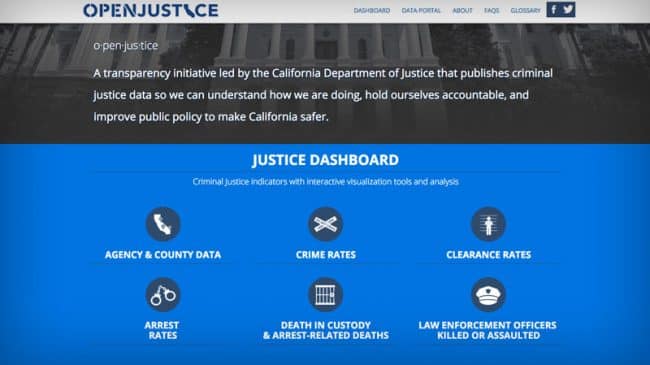California Attorney General Kamala Harris recently unveiled “OpenJustice,” a new website that allows the public to search through data sets on three topics: law enforcement officers killed or assaulted in the line of duty in the state; deaths of individuals in police custody (including arrest-related deaths); and the number of arrests and bookings. Harris said the portal “embraces transparency” and “puts forward a common set of facts, data and goals so that we can hold ourselves accountable and improve public safety.”
Given the number of high-profile deaths at the hands of police across the country, citizens and the media have begun to realize that the current means of tracking even the most basic information – such as how many people are killed at the hands of police officers – is simply unavailable or severely underreported. This information is so limited, in fact, that some major media outlets have begun tracking and publishing this information on their own, providing more accurate statistics than any government agency to date.
With OpenJustice, California is the first state to make this data readily available for the public to search through, and Attorney General Harris should be commended for her efforts.
So what exactly does the data on OpenJustice show, and what is missing?
On the website, information about police officer deaths is detailed from 1980-2014, while in-custody deaths are only presented for 2005-14 (though it’s possible to download a raw data file containing data back to 1980).
From 2005-14, 6,837 individuals died while in police custody. Of these deaths, 984 were killed by police officers. During that same time period, citizens killed 39 police officers, or an average of just fewer than four per year.
Despite making up only 5.3 percent of California’s population, black citizens accounted for 24.2 percent of all deaths in custody, as well as 16.7 percent of all arrests. This type of disparity did not exist for citizens of other races.
Moreover, this data set does not address the problem of getting law enforcement agencies to properly report the data. Indeed, as the Register reported in 2014, “at least one in every five fatal shootings across Southern California isn’t counted in official statewide and national homicide reports.” This new website doesn’t guarantee that reporting will get any better.
Harris said she supports a bill that would require police departments to report to her department all cases in which people are seriously injured by police officers in shootings, among other things. But it’s unclear what the enforcement mechanism would be.
Despite some imperfections, this database, as well as legislation requiring police departments to report information about in-custody deaths, should serve as a model for other states. Reform must come only after all of the basic facts are available. Without data, it’s impossible to know if there’s a problem or how it needs to be addressed.
Lauren Galik is director of criminal justice reform at Reason Foundation. This article originally appeared in the Orange County Register.

